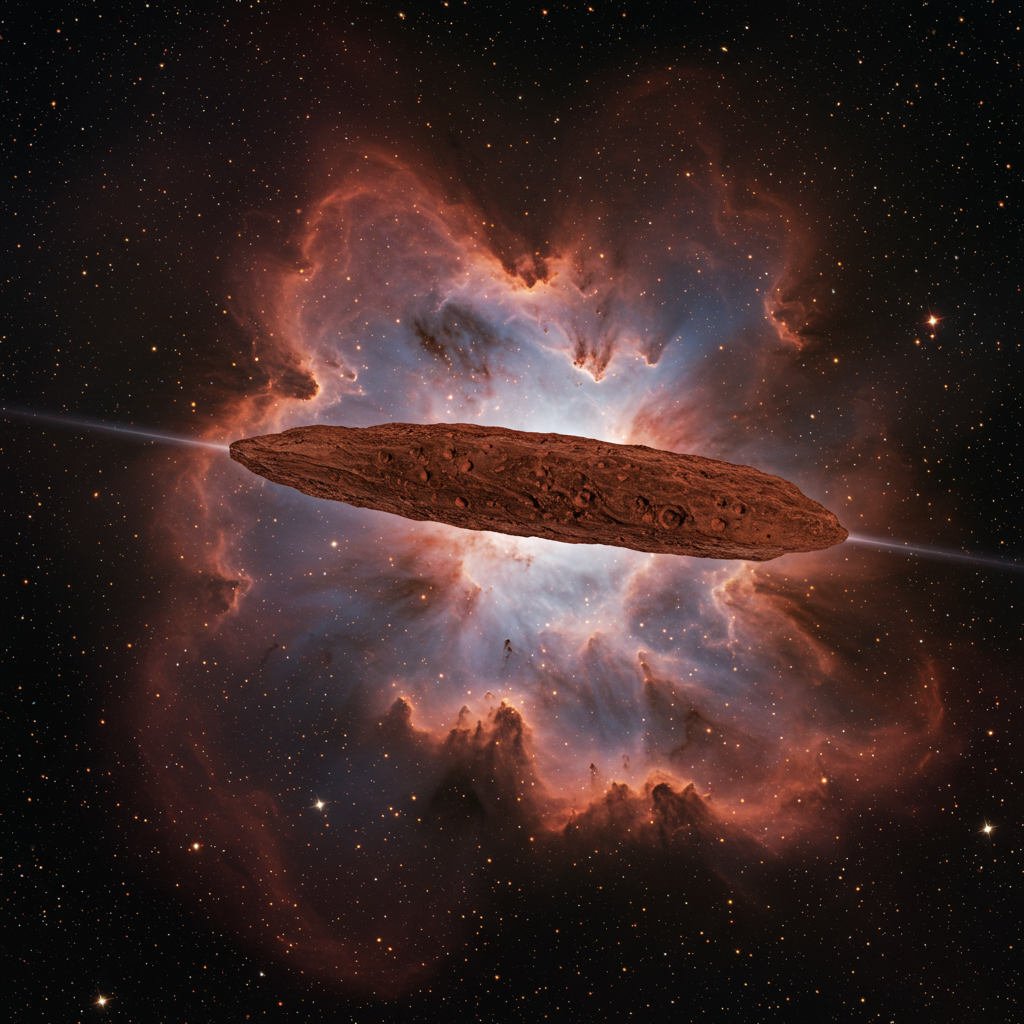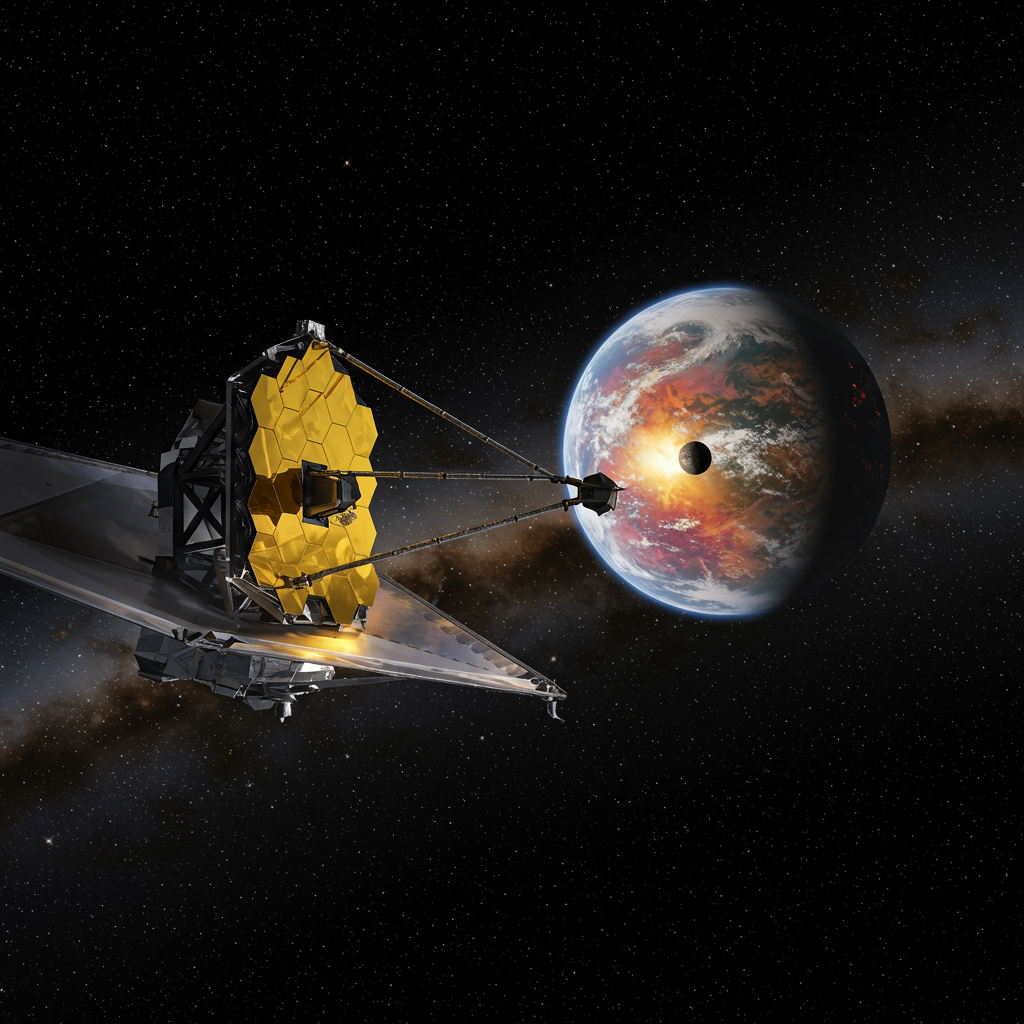A groundbreaking discovery has captured the attention of astronomers worldwide: a third confirmed object from beyond our solar system is hurtling through the cosmic neighborhood. Designated 3I/atlas, this enigmatic interstellar visitor presents a rare opportunity to peer into the distant reaches of our galaxy. Its swift, unusual trajectory marks it as an undeniable interloper, unlike anything originating within our Sun’s gravitational grasp. Scientists are now racing against time to study 3I/ATLAS before it continues its journey back into the depths of interstellar space.
Third Confirmed Interstellar Visitor Identified
The object, initially spotted and tracked by the Asteroid Terrestrial-impact Last Alert System (ATLAS), carries the official interstellar designation 3I/ATLAS. The “3I” signifies it is the third such object confirmed to originate from outside our solar system. The “ATLAS” portion honors the network of telescopes in Hawaii, Chile, and South Africa that first detected it on July 1st through automated scans.
This detection was quickly followed by classification. Based on its speed and path, experts rapidly flagged it as an interstellar candidate. NASA officially confirmed this classification on July 2nd. Because the object also shows early signs of shedding material like a comet, it has received the additional cometary designation C/2025 N1 (ATLAS).
Larry Denneau, an astronomer at the University of Hawaii and ATLAS co-principal investigator, noted the initial appearance was deceiving. “At first, it looked like a completely garden-variety near-Earth asteroid,” he said. There was no immediate giveaway of its alien origin.
Unmistakable Signs of an Interstellar Journey
What distinguishes 3I/ATLAS is its incredible speed and flat, straight trajectory. It’s traveling at roughly 152,000 miles per hour (about 245,000 km/h) relative to the Sun. This velocity is far too high to be explained by the Sun’s gravity acting on an object born in our solar system.
Astronomers measure an object’s path to determine its origin. If an object’s speed exceeds a certain threshold, known as the escape velocity, it indicates it has enough energy to break free from the Sun’s pull entirely. 3I/ATLAS easily surpasses this speed. While planetary encounters can sometimes slingshot objects to higher speeds, winding back 3I/ATLAS’s path shows no such planetary close calls. This confirms its origin lies far beyond our cosmic doorstep.
Its remarkably flat and straight path is also highly unusual for objects born here. This combination of speed and trajectory makes its interstellar status undeniable.
A Rare Comparison: ‘Oumuamua and Borisov
Before 3I/ATLAS, astronomers had only confirmed two other interstellar objects passing through our solar system. The first, 1I/’Oumuamua, was detected in 2017. The second, 2I/Borisov, a clear comet, arrived in 2019. These discoveries sparked immense interest, as they offer unprecedented glimpses into other star systems.
3I/ATLAS is unique even among this exclusive club. It is moving considerably faster than either ‘Oumuamua or Borisov. Furthermore, its approach direction is different, coming from near the galactic center within the constellation Sagittarius.
Chris Lintott, an astronomer at the University of Oxford not involved in the discovery, pointed out the significance of this. “That suggests it may have originated in a very different environment,” Lintott explained.
Insights from a Distant Origin
The trajectory and speed of 3I/ATLAS hint at its potential birthplace. Scientists speculate it might have originated from our galaxy’s thick disk. This region hosts an older population of stars compared to the thinner disk where our Sun resides.
Objects from the thick disk often possess different chemical compositions. This difference could mean 3I/ATLAS is richer in elements like ice and water than objects formed closer to home. Studying its composition could therefore provide clues about the conditions in this ancient galactic neighborhood and potentially the system it was born in.
Pinning down the object’s precise size has been challenging initially. Early observations led to debates. “With just a couple of days of observations, we’ve been debating whether it looks bright because it’s large — maybe 10 to 20 kilometers across — or because it’s showing early signs of cometary activity,” said Lintott. If it’s shedding material, the shroud around it would make it appear brighter and larger than its core size. “It now seems like the latter,” he added, suggesting its apparent brightness is likely due to early activity rather than immense size. This places its estimated size up to 12 miles (20 kilometers) across.
The Race to Observe 3I/ATLAS
Astronomers are operating under tight deadlines to gather data on 3I/ATLAS. Its journey through the inner solar system is fleeting. Currently located about 4.5 times the Earth-Sun distance away, it is accelerating toward our star.
As it approaches the Sun, the warming temperatures are likely causing its icy components to vaporize, forming a visible coma and potentially a tail – the hallmark of an active comet. Studying the gas and dust released will offer vital clues about its composition, giving scientists a chance to analyze material from a potentially alien star system. The color of the dust could also reveal details about its makeup.
The object will make its closest approach to the Sun (perihelion) on October 30th, coming within 1.4 times the Earth-Sun distance. Just before this, it will pass closest to Mars, within 0.4 times the Earth-Sun distance.
Lintott emphasized the urgency: “We want to get observations as quickly as possible because right now the object is pristine.” As it gets closer to the Sun, it becomes “baked,” altering its surface and the material it sheds.
Visibility and Future Observations
While currently too faint for casual observation, 3I/ATLAS is expected to brighten significantly as it nears the Sun. It may become visible to amateur telescopes in the coming weeks and months. The Virtual Telescope Project offered a free livestream on July 3rd, providing the public with initial views captured by their powerful telescope in Italy. They also released early images of the object.
The observing window is critical. The comet will be observable until late September before the Sun’s glare obscures it. It will become visible again from December onwards as it travels back out of the solar system.
This rare visitor is a high priority target for astronomers. While its exact origin star may remain a mystery — interstellar objects may wander for billions of years before passing near another system — the prospects for studying 3I/ATLAS are promising. Scientists are mobilizing teams to characterize it thoroughly. Powerful instruments like the James Webb Space Telescope and potentially even NASA’s Mars rovers could be used for future observations.
Karen Meech, an astronomer at the University of Hawaii who studied ʻOumuamua, highlighted the progress made since the first discovery. “Everyone is working much harder to find them and we have tools set up to quickly establish an orbit and mobilize teams of observers to characterize them,” Meech stated. The upcoming sky surveys by the Vera C. Rubin Observatory are anticipated to dramatically increase the rate of discovering these interstellar passersby.
Importantly, NASA has confirmed that 3I/ATLAS poses no threat to Earth. It will remain well outside our planet’s orbit, keeping a minimum distance of at least 1.6 times the Earth-Sun distance during its passage.
Frequently Asked Questions
What is the new interstellar object 3I/ATLAS?
3I/ATLAS is the third celestial body confirmed to have originated from outside our solar system. Initially detected on July 1st by the ATLAS telescope network, its high speed (around 152,000 mph) and trajectory indicate it is not gravitationally bound to the Sun. It is also designated C/2025 N1 because it is showing early signs of cometary activity, potentially shedding material as it approaches the Sun.
Can I see interstellar object 3I/ATLAS? How is it being observed?
3I/ATLAS is currently too faint for standard viewing, requiring specialized equipment like powerful telescopes. However, it is expected to brighten as it nears the Sun and may become visible to amateur astronomers in the coming weeks and months. Scientists are using ground-based telescopes, including the ATLAS network, and may utilize instruments like the James Webb Space Telescope or the upcoming Vera C. Rubin Observatory for detailed observations of its composition and activity before it leaves our solar system.
Is interstellar object 3I/ATLAS dangerous to Earth?
No, interstellar object 3I/ATLAS poses no threat to Earth. Its trajectory keeps it far away from our planet. At its closest approach to the Sun on October 30th, it will be within the orbit of Mars but well outside Earth’s path. NASA has confirmed its minimum distance from Earth will be at least 1.6 times the distance between the Earth and the Sun.




